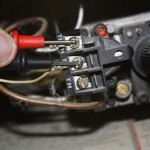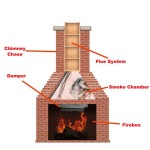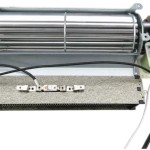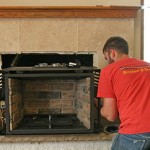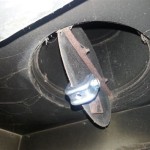Wall Mounted Bio Ethanol Fireplace Reviews: A Comprehensive Guide
Wall mounted bio ethanol fireplaces have emerged as a popular choice for homeowners and renters alike. These fireplaces offer a blend of aesthetic appeal, ease of installation, and functionality, making them a desirable alternative to traditional wood-burning or gas fireplaces. Unlike conventional fireplaces, bio ethanol models do not require a chimney or gas line, simplifying the installation process and expanding placement options within a home.
This article provides a comprehensive review of wall mounted bio ethanol fireplaces, exploring their advantages, disadvantages, and key considerations for prospective buyers. We will examine the aspects to evaluate when selecting a suitable model, highlighting factors such as safety features, heating capacity, and overall design.
Understanding Bio Ethanol Fireplaces and Their Operation
Bio ethanol fireplaces operate by burning liquid bio ethanol fuel, a denatured alcohol derived from plant-based sources such as corn or sugarcane. This fuel produces a clean-burning flame, releasing only water vapor, carbon dioxide, and a small amount of heat. The combustion process does not generate smoke, soot, or ash, eliminating the need for venting or chimney systems. This clean-burning characteristic is a significant advantage, especially for individuals with respiratory sensitivities or those residing in apartments where traditional fireplaces are prohibited.
The operation of a bio ethanol fireplace is relatively straightforward. The fuel is poured into a burner, which is typically made of stainless steel. The burner is then ignited using a long lighter or match. The flame intensity can often be adjusted by manipulating a sliding mechanism on the burner, controlling the amount of fuel exposed to the air. Fuel consumption varies depending on the burner size and flame setting, typically ranging from a few hours to several hours per liter of fuel. When the user needs to extinguish the flame, a snuffer tool is used to deprive the flame of oxygen, effectively extinguishing it.
Key Considerations When Choosing a Wall Mounted Bio Ethanol Fireplace
Selecting the right wall mounted bio ethanol fireplace requires careful consideration of several key factors. These include safety features, heating capacity, design and aesthetics, and overall build quality. Neglecting any of these aspects can lead to dissatisfaction with the purchase or, in extreme cases, pose a safety hazard.
Safety Features: Safety should be the paramount concern when choosing any type of fireplace. Look for models that incorporate features such as flame arrestors, which prevent fuel spillage in case the fireplace is knocked over. Some models also include sensors that automatically shut off the fuel supply if the fireplace overheats or detects an unstable flame. Ensure the chosen fireplace meets relevant safety standards and certifications. It is also important to have a carbon monoxide detector in the room as a precautionary measure, although the risk of carbon monoxide poisoning from a bio ethanol fireplace is minimal due to its clean-burning nature. Always follow the manufacturer's instructions regarding fuel type, filling procedures, and ventilation.
Heating Capacity: Bio ethanol fireplaces are not intended to be primary heating sources. Their heating capacity is typically limited, providing supplemental heat for a small to medium-sized room. The heating output is measured in British Thermal Units (BTUs). Before purchasing a fireplace, assess the size of the room in which it will be installed and choose a model with an appropriate BTU rating. Be realistic about the heat output; these fireplaces are more for aesthetic ambiance than for significant heating purposes. Overestimating the heating capacity can lead to disappointment, while underestimating it may result in inadequate warmth.
Design and Aesthetics: Wall mounted bio ethanol fireplaces are available in a wide variety of designs, materials, and finishes. Choose a model that complements the existing décor of the room. Consider factors such as the size, shape, and color of the fireplace, as well as the materials used in its construction. Options range from sleek, modern designs with stainless steel or glass accents to more traditional styles with stone or wood finishes. Consider the visibility of the mounting hardware. Some models feature concealed mounting systems for a cleaner, more minimalist look.
Build Quality and Materials: The quality of materials and construction is crucial for both safety and longevity. Look for fireplaces made from durable materials such as stainless steel, tempered glass, and high-quality powder coatings. Check for any signs of poor workmanship, such as sharp edges, loose fittings, or uneven finishes. A well-built fireplace will not only look better but will also be more resistant to wear and tear over time.
Advantages and Disadvantages of Wall Mounted Bio Ethanol Fireplaces
Wall mounted bio ethanol fireplaces offer several advantages over traditional fireplaces, including ease of installation, clean burning, and aesthetic appeal. However, they also have some limitations that potential buyers should consider.
Advantages:
- Easy Installation: No chimney, gas line, or electrical connection is required, simplifying the installation process.
- Clean Burning: Bio ethanol fuel produces no smoke, soot, or ash, making it suitable for indoor use.
- Aesthetic Appeal: Available in a wide variety of designs and styles to complement any décor.
- Portability: Some models can be easily moved from one location to another.
- Environmentally Friendly: Bio ethanol is a renewable fuel source.
Disadvantages:
- Limited Heating Capacity: Not intended to be a primary heating source.
- Fuel Cost: Bio ethanol fuel can be more expensive than wood or natural gas.
- Refueling Required: Requires manual refueling, which can be inconvenient for some users.
- Flame Size and Appearance: The flame may not be as large or realistic as that of a traditional fireplace.
- Ventilation: While they don't require a chimney, adequate ventilation is still necessary to prevent the build-up of carbon dioxide and water vapor.
Installation and Maintenance
The installation of a wall mounted bio ethanol fireplace is typically straightforward, but it is crucial to follow the manufacturer's instructions carefully. Most models come with mounting brackets and hardware. Ensure the wall is strong enough to support the weight of the fireplace, especially when filled with fuel. Use a level to ensure the fireplace is mounted straight and securely.
Maintenance is relatively simple. Regularly clean the burner with a damp cloth to remove any spills or residues. Inspect the fireplace for any signs of damage or wear. Store bio ethanol fuel in a cool, dry place away from direct sunlight and heat sources. Always use the correct type of bio ethanol fuel recommended by the manufacturer.

Arlington White Bioethanol Fireplace

Wall Mounted Ethanol Fireplaces Industry Leading Design The Bio Flame

Indoor Wall Mounted Recessed Bio Ethanol Fireplace On Onbuy

43 Inch Surface Wall Mount Bio Ethanol Fireplace Smallbee

Large Elegant Wall Mounted Bioethanol Fireplace

Arlington Black Bioethanol Fireplace

Henley Bioethanol Fireplace

Chelsea Wall Mounted Bio Ethanol Fireplace
:max_bytes(150000):strip_icc()/Ethanol-Fireplace-via-smallspaces.about.com-56a889795f9b58b7d0f3278c.jpg?strip=all)
Using An Ethanol Fireplace In A Small Home

Bio Ethanol Fireplace Burner Delta 1200x280 Horizontal Corner Kratki
Related Posts


